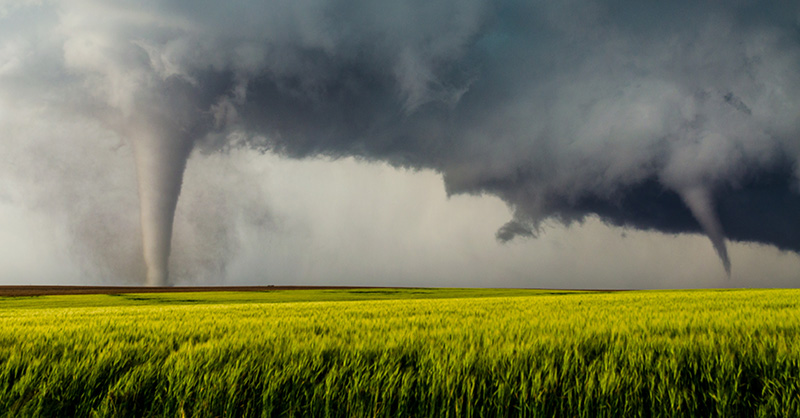Severe Weather Trends and Safety Tips

The tornado season is off to an active start. In fact, weather analysts tallying the latest numbers are reporting that there were at least 210 confirmed tornados in March - a number far more commonly seen in April or June. While most of these events were smaller storms, severe weather outbreaks were particularly significant in Southern states. The economic impact is apparent. Aon’s most recent estimates for Q1 of 2022 put economic losses from natural hazards at roughly $6 billion in the United States.
Scientists studying severe weather and tornadic activity identify several notable trends. First, tornado seasons are becoming more variable with tornadoes occurring earlier and later in the year. The monthly variability of EF1+ tornadoes has increased with a growing number of record-busy and record-calm months. Tornado outbreaks are also getting larger and more frequent meaning that communities are seeing more tornadoes on a given day. One of the most concerning trends in recent decades is geographic. Scientists have noticed that Tornado Alley has shifted eastward. The central U.S. still has a high frequency of tornados, but the average number of tornados in states like Alabama, Arkansas, Kentucky, Mississippi, Missouri, Tennessee, and Virginia has increased significantly. Tornado casualties are also more significant in the South for a variety of reasons. Many southern states have growing populations, so a greater number of people are exposed when a storm hits. In addition, more people in the South live in manufactured homes. Tornadoes in this area are also more likely to strike at night.
So, why do tornado outbreaks seem to be getting more frequent and intense? Is climate change playing a role? The stronger and longest-lasting tornadoes usually come from what are known as supercells – powerful rotating thunderstorms. This falls under the idea of global warming. While it’s hard for climate models to assess something as small as a tornado, they do project increases in severe weather.
There are a number of resources available to help your insureds prepare for storms this season. The National Weather Service’s Storm Prediction Center website publishes eight-day outlooks to help anticipate potential convective activity in an area. Tap into Great American’s loss prevention materials as well to help insureds create a storm response plan.
Life is full of uncertainties. While not all types of losses are preventable, many can be mitigated through proactive action. At Great American, not only do we take loss control seriously, we try to make it easier for our customers to operate in a safer environment. Check out the links below for additional safety tips!
When you need to make a claim, you want to work with experts who understand your loss and what to do. That’s why our claims professionals specialize in the markets they serve and are ready to jump into action knowing each day costs clients valuable time and money. For questions, please contact your local Property & Inland Marine representative.
When you buy insurance, you are buying the promise that an insurance company can meet its obligations to you. One way we commit to that promise is with a financially strong company. Learn more about our financial strength, which spans decades.
References:
https://theconversation.com/tornadoes-climate-change-and-why-dixie-is-the-new-tornado-alley-178863